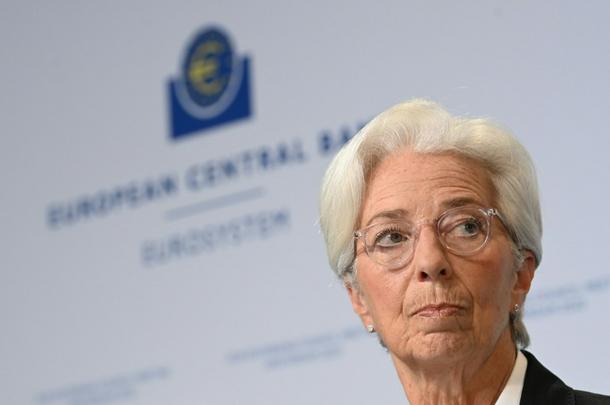
The ECB has been hiking rates at what president Christine Lagarde has called 'the fastest pace ever'
Frankfurt (Germany) (AFP) - The European Central Bank opted for a smaller interest rate increase of half a percentage point on Thursday but warned of more hikes to come in the “long game” to tame red-hot inflation.
The ECB has been lifting borrowing rates at an unprecedented pace in recent months to bring down record-high consumer prices after Russia’s war in Ukraine sent energy and food costs surging.
Following two consecutive “jumbo” hikes of 75 basis points, the ECB’s governing council agreed to downshift to an increase of 50 basis points at its final meeting of 2022.
The move mirrors the half-point steps taken by the US Federal Reserve on Wednesday, and the Bank of England earlier on Thursday.
But ECB president Christine Lagarde warned that inflation in the 19-nation eurozone was still “far too high” and more action needed to be taken.
“We have more ground to cover, we have longer to go and we are in for a long game,” Lagarde told reporters.
Interest rates will still have to “rise significantly at a steady pace,” she said, adding that the eurozone should expect further rises “at 50 basis-point pace for a period of time”.
Eurozone inflation eased in November for the first time in 17 months, partly thanks to efforts by European governments to shield consumers from energy price shocks.
At 10 percent however, inflation remains five times higher than the ECB’s target.
ING bank economist Carsten Brzeski said the ECB’s comments were “surprisingly hawkish”.
The ECB’s closely-watched bank deposit rate – one of its three main rates – will now finish the year at 2.0 percent, the highest level since 2008.
- ‘Short-lived and shallow’ -
“The ECB is now more worried about tightening too little and would accept some short-term economic pain to bring inflation back to target,” said Berenberg Bank economist Salomon Fiedler.
Like other central banks, the ECB is walking a fine line as it seeks to raise borrowing costs enough to cool inflation without dampening demand so much it triggers a deep economic downturn.
The ECB’s latest quarterly projections on Thursday showed that the eurozone economy was expected to contract in the final quarter of 2022 and the first quarter of 2023.
But the ECB said the winter recession would likely be “relatively short-lived and shallow”, echoing analysts’ expectations as households and businesses feel the impact of government interventions and gas storage facilities are fuller than usual at this time of year.
The ECB however slashed its outlook for economic growth in 2023, from 0.9 percent previously to 0.5 percent. Stronger growth of 1.9 percent should then be achieved for 2024, it said.
“The war against Ukraine and its people remains a significant downside risk to the economy,” Lagarde cautioned.
The Frankfurt institution also unveiled its first-ever inflation projection for 2025, set to come in at 2.3 percent.
While still above the ECB’s two-percent target, it’s a far cry from the 6.3 percent inflation projected in 2023, followed by 3.4 percent in 2024.
Both are higher figures than previously forecast.
Lagarde acknowledged the “substantial upward revision” on inflation, the latest in a long line as the ECB faces criticism for having consistently underestimated price pressures in recent months.
Lagarde added that the bank was keeping a close eye on wage growth, as workers demand salary increases to keep up with higher prices for goods and services.
The ECB sees wages growing “at rates well above historical averages, and pushing up inflation”, Lagarde said.
- Bloated portfolio -
The ECB also opened up another front in its battle against high inflation, outlining for the first time when and how it plans to start slimming down its five-trillion-euro bond portfolio after years of hoovering up corporate and government debt.
The bank said it would stop reinvesting the proceeds from some maturing bonds from March, reducing its balance sheet by 15 billion euros per month on average though June.
Further details of the “quantitative tightening” plan will be announced in February.